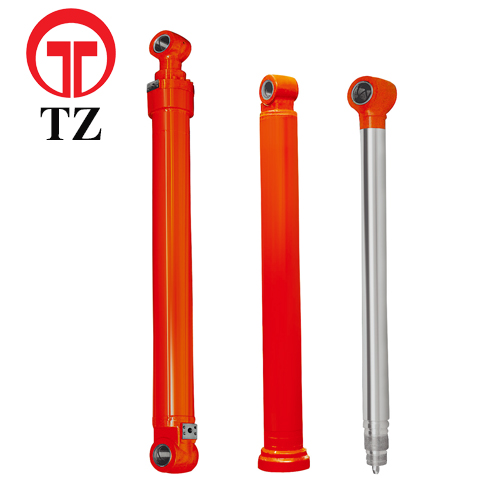Hydraulic cylinder assemblies provide the smooth and powerful motion that operates booms, braços, baldes, and attachments on mobile equipment like excavators and cranes. These hydraulic boom cylinder assemblies experience high pressure loads across long extension and retraction strokes. Their robust construction and seals enable reliable motion control under challenging operating conditions. Below we look at boom cylinder configurations, component makeup, and factors impacting service life.

Hydraulic Boom Cylinder Assembly Configurations
Heavy equipment utilizes two common boom cylinder arrangements:
- Single Cylinder – A single hydraulic cylinder mounts to the top of the boom and base pivot to provide lifting force.
- Telescoping Cylinders – Two or more cylinders nest together with the larger diameter base cylinder providing most of the lifting force. The smaller bore cylinder handles fine positioning.
Larger equipment like 100 ton cranes may incorporate four or more telescoping cylinder stages to achieve necessary reach. The cylinder bore, rod diameter, stroke length, and hydraulic system pressure all determine the lifting capacity provided.
Key Internal Components
Hydraulic boom cylinders require high strength internal components to bear massive loads:
- Piston – Hardened steel with piston rings and wear bands to seal against cylinder bore.
- Rod – Hardened chrome-plated steel with polished finish for smooth movement.
- Seals – High quality seals resist abrasion and extrusion damage.
- Bearings – Heavy duty bearings on rods handle side loads on booms.
- Barrel – Thick cylinder tubes contain rated pressures with steel or composite materials.
Proper machining and treatments like nitriding give exceptional fatigue life. Regular seal replacement maintains cylinder integrity.
Maximizing Service Life
Several practices maximize boom cylinder service life:
- Using OEM seals – Proprietary seal materials often outperform aftermarket seals.
- Annual inspections – Check for dents, corrosion, leaks and stuck or loose components.
- Cleaning rods – Keep chrome rods free of scratches and dirt accumulation.
- Filter maintenance – Change hydraulic filters per OEM schedules.
- Avoiding side loads – Side stresses shorten seal life. Use properly aligned shims.
- Catching leaks early – Small leaks become big failures if not promptly fixed.
- Rod protection – Storage with rods retracted prevents corrosion.
- Proper operation – Follow equipment guidelines and lifting capacities.
With robust construction and proper care, hydraulic boom cylinders achieve reliable service measured in thousands of hours. But wear is inevitable, so replacing seals, bearing and components at rebuild time maintains intended performance. Quality hydraulic boom cylinder assemblies enable positioning massive loads with smooth precision daily.
